21 Ways You’re Washing Your Clothes All Wrong, According to Experts

For most people, tossing a load of laundry in the washing machine is such a standard part of their weekly routine it’s practically done on autopilot. After all, how difficult is it to pour in some detergent and press a button? However, it’s the deceptive simplicity of this everyday task that can cause serious problems in the long run—and not just for your clothing, but for your appliances themselves. From the products you use to the way you load your machine, cleaning experts say these are the laundry mistakes that mean you’re washing your clothing all wrong.
READ THIS NEXT: What Happens When You Don’t Wash Your Sheets Every Week, Doctors Say.
1
You buy the wrong detergent for your machine.
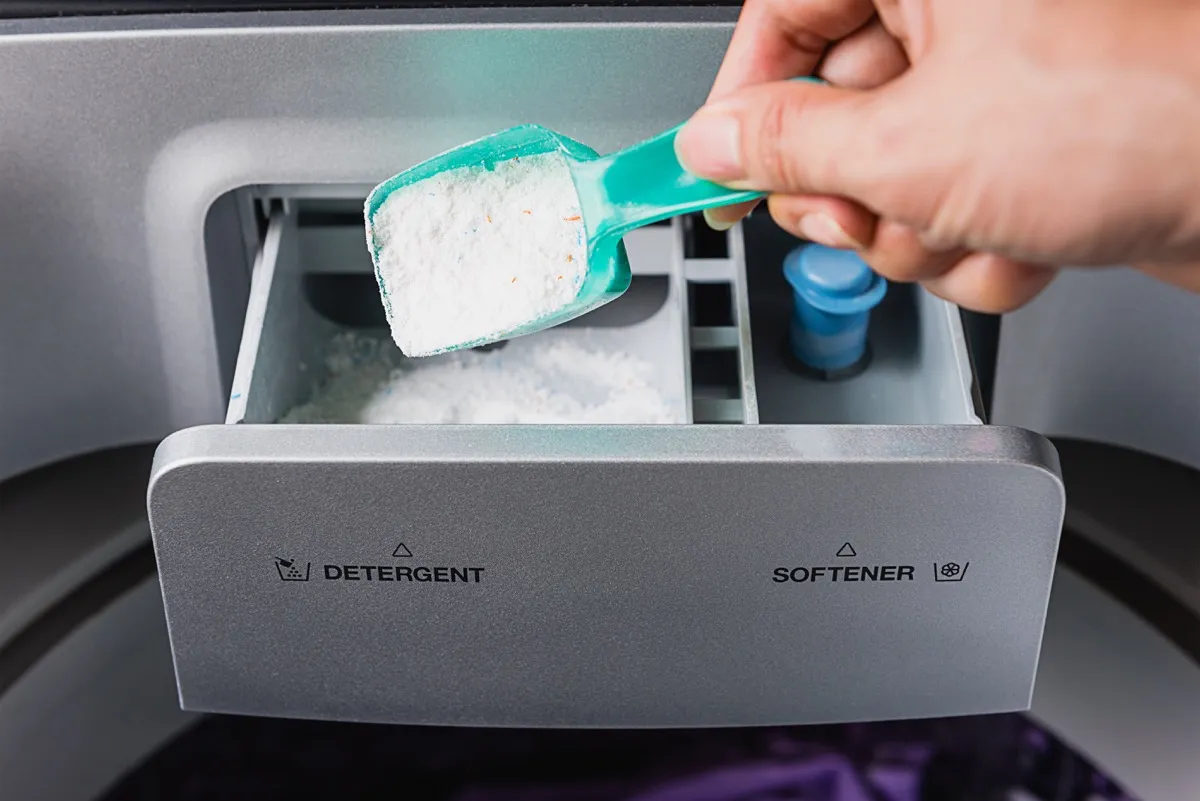
Those warnings about only using high-efficiency (HE) detergents in your HE machine should be heeded—or else. High-efficiency machines use as little water as possible by monitoring the suds levels in the wash, explains Mary Johnson, principal scientist for Tide and Downy. That means that the wrong kind of detergent can cause major problems.
“When an HE machine senses too many suds, it may add an extra rinse, causing 25 minutes to be added to the total cycle time,” she says. “You’re wasting time, energy, and, ultimately, money.”
If you’re unsure about what kind of machine you have, play it safe and stick with HE detergents—they work in traditional washers, too.
2
You judge load size by how full the washer is.
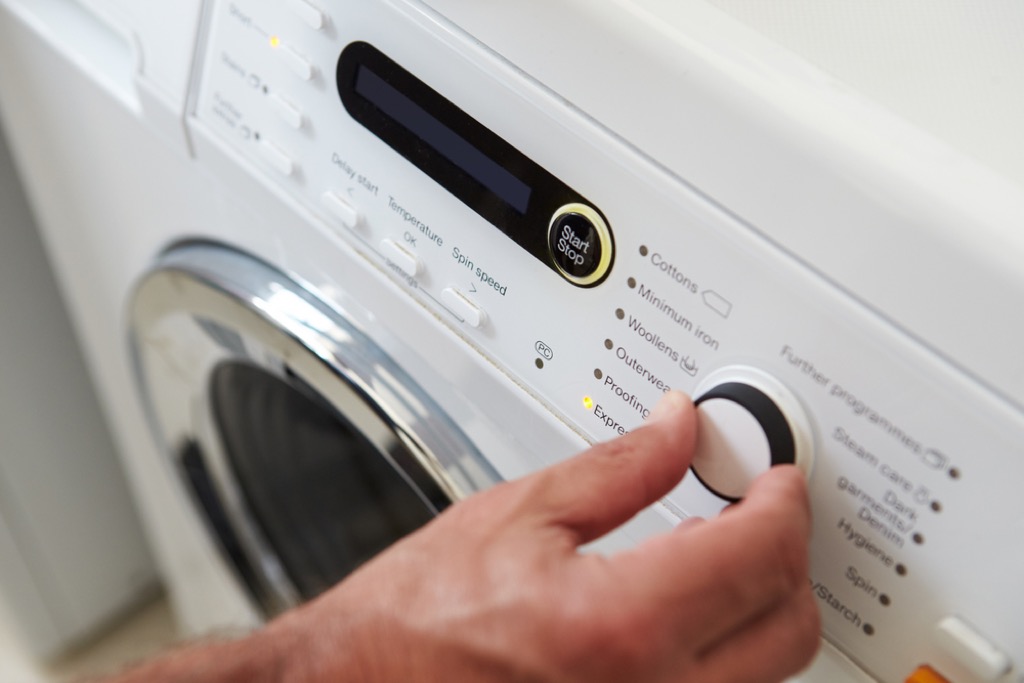
Those little marks on the detergent lid that tell you how much to use can be confusing. Seriously, how big is a “big” load anyway? For a bit of guidance, Johnson recommends looking at the size of your laundry pile before you toss it into the machine, as well as paying attention to how soiled it is.
“Drums in the larger [high-efficiency] machines can hold up to 32 pounds of laundry—that’s the equivalent of 30 plush bath towels,” she says, noting that what’s technically a large load can look positively little once inside the machine. If you underestimate and don’t put enough detergent in, even clean-looking clothes could be carrying invisible soil like sweat and dead skin, Johnson adds.
3
You don’t clean your washing machine.
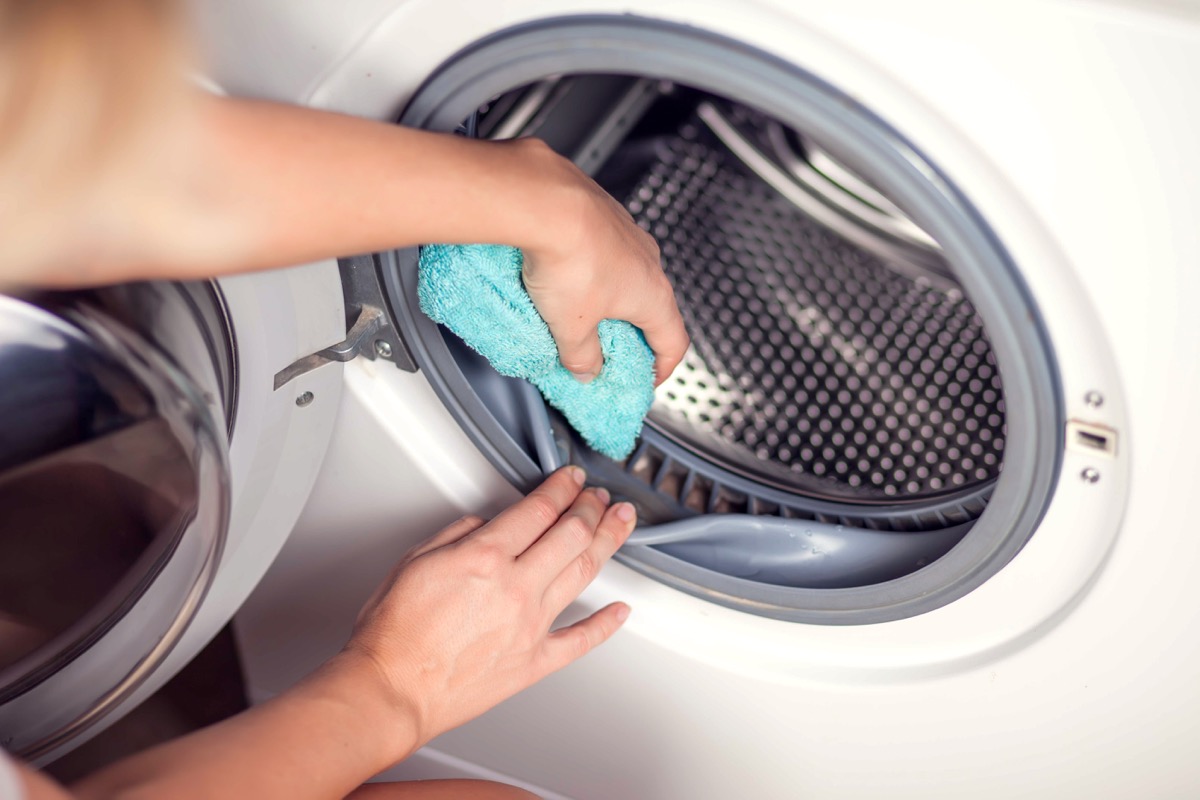
Just because your washing machine cleans your clothes effectively doesn’t mean it’s self-cleaning. Some of the residual bacteria from your clothing can stick to the inside of your machine, and a dirty washer can leave your clothes smelling anything but fresh.
So, how should you go about cleaning your machine? “Once or twice a year, you need to run the washer on the hottest water setting with a quart of chlorine bleach to kill the bacteria,” says Harriet Jones, cleaning supervisor for Go Cleaners London. She recommends following this up with a hot cycle that contains a quart of white vinegar.
4
You put spandex items in the washing machine.
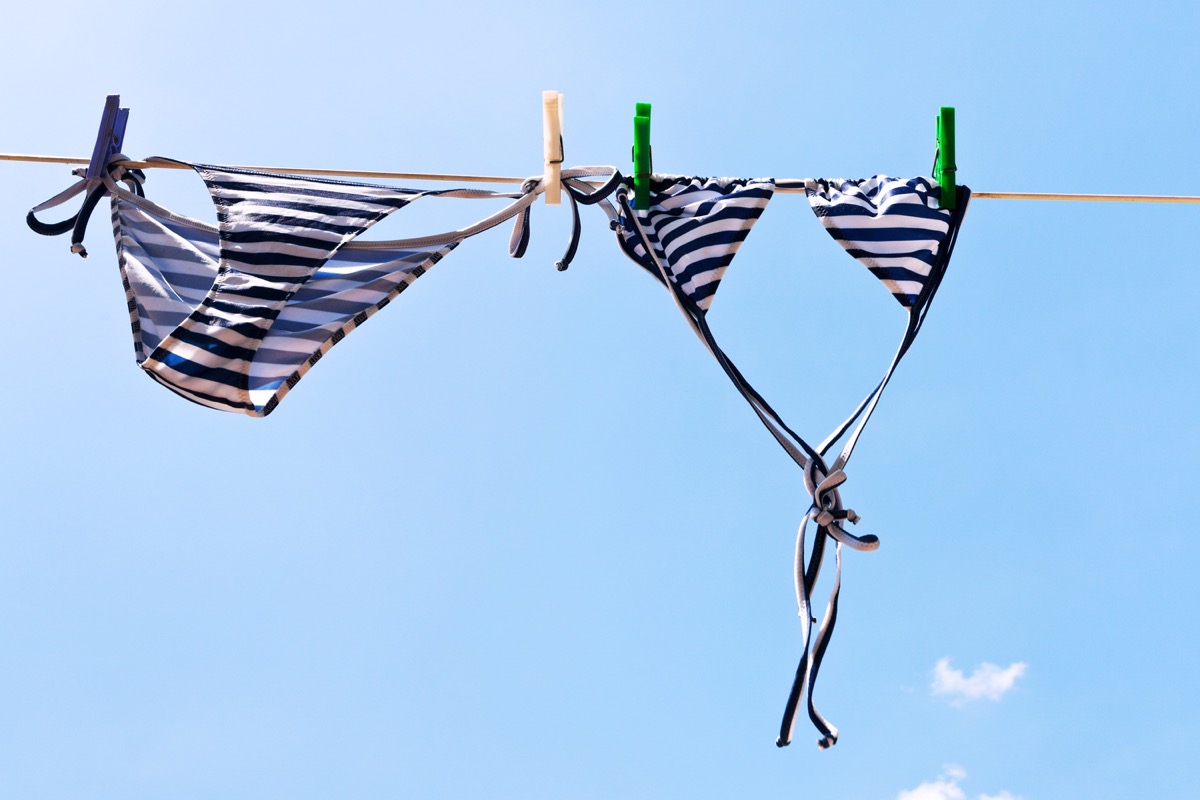
Think you can safely toss those bike shorts and bathing suits into the washer with the rest of your clothes? Think again.
“It may be a real pain in the neck, but hand washing them in cold water instead will always help them retain their stretch,” explains cleaning expert Sean Parry, director of UK-based cleaning company Neat Services. However, if you don’t have time to hand wash them, Parry says a delicate or hand wash cycle can do in a pinch.
READ THIS NEXT: The First Things Guests Notice About Your Bathroom, Experts Say.
5
You don’t turn delicate clothing inside out before washing it.
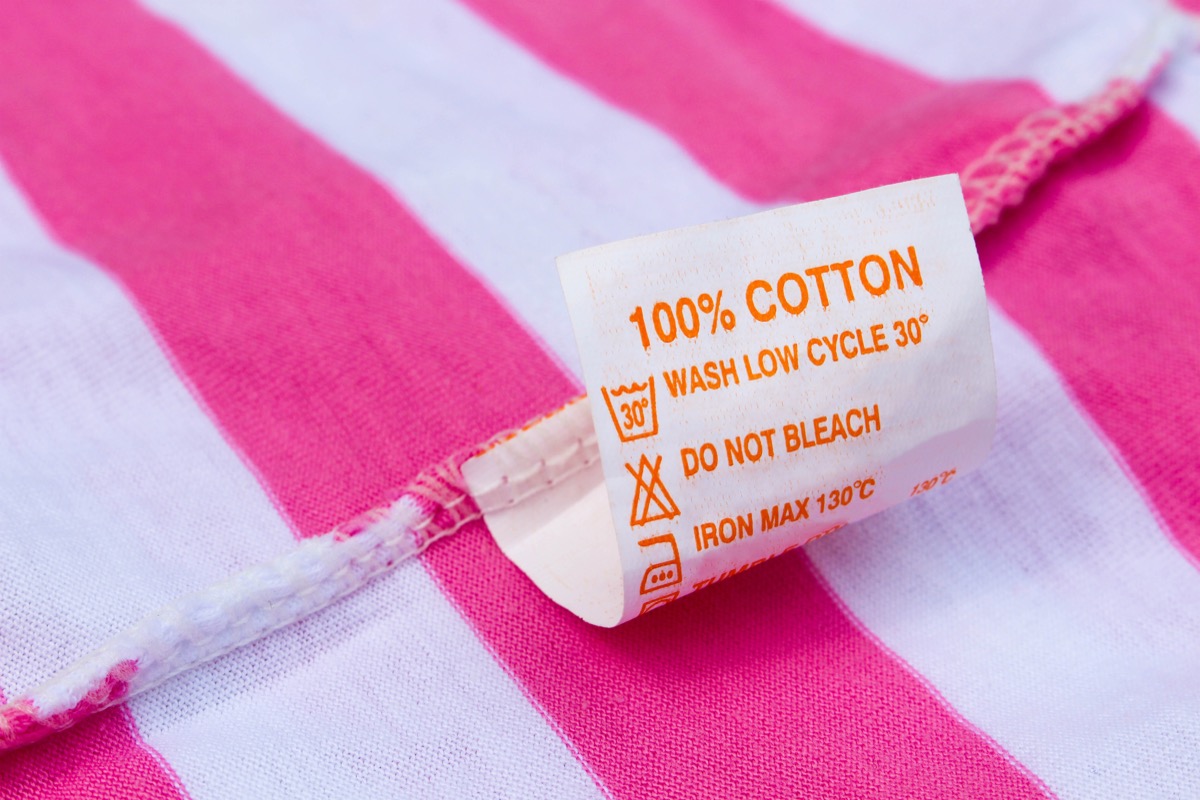
If you want those graphic t-shirts and delicate sweaters to last, it’s time to start turning them inside out before you toss them in the washing machine.
“The thousands of rotations in each wash cause friction between the clothes. This friction can cause printed graphics to fade and also cause pilling on certain fabrics such as wool and cashmere,” Parry explains. If you turn them inside out, however, this damage becomes imperceptible to others, but your clothes still get clean.
For these same reasons, Frej Lewenhaupt, co-founder and CEO of Scandinavian textile care brand Steamery, recommends placing delicates in a laundry bag.
6
You don’t use delicate-specific detergent.

“Garments made from wool and cashmere can get holes when washed with a laundry detergent that is not suitable for these fabrics, since harsh enzymes will break down the natural oils and make them more fragile and easier to tear,” explains Lewenhaupt. Therefore, he advises using a laundry detergent specifically made for delicates.
He also suggests choosing a wool program or hand wash setting, “as these are particularly gentle programs designed to resemble hand washing.”
7
You wash everything in hot water.
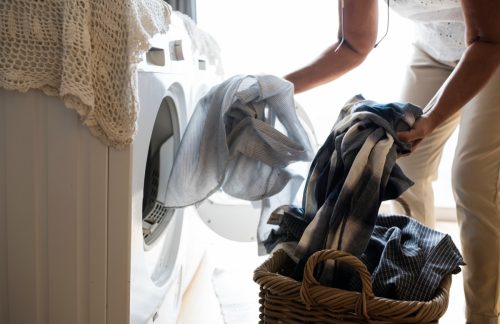
If you need to wash super-soiled socks or stained bedsheets, by all means—turn the water temperature to hot. But for most everyday laundry loads, cold water is probably best.
“Cold water laundry cycles are gentler on fabric than hot water washes, meaning that delicate fabrics and colors won’t fade as quickly over time,” Beatrice Flores, cleaning expert and head blogger at Living Pristine, previously told Best Life. Cold water also prevents clothing from shrinking.
8
You don’t clean your lint trap frequently enough.
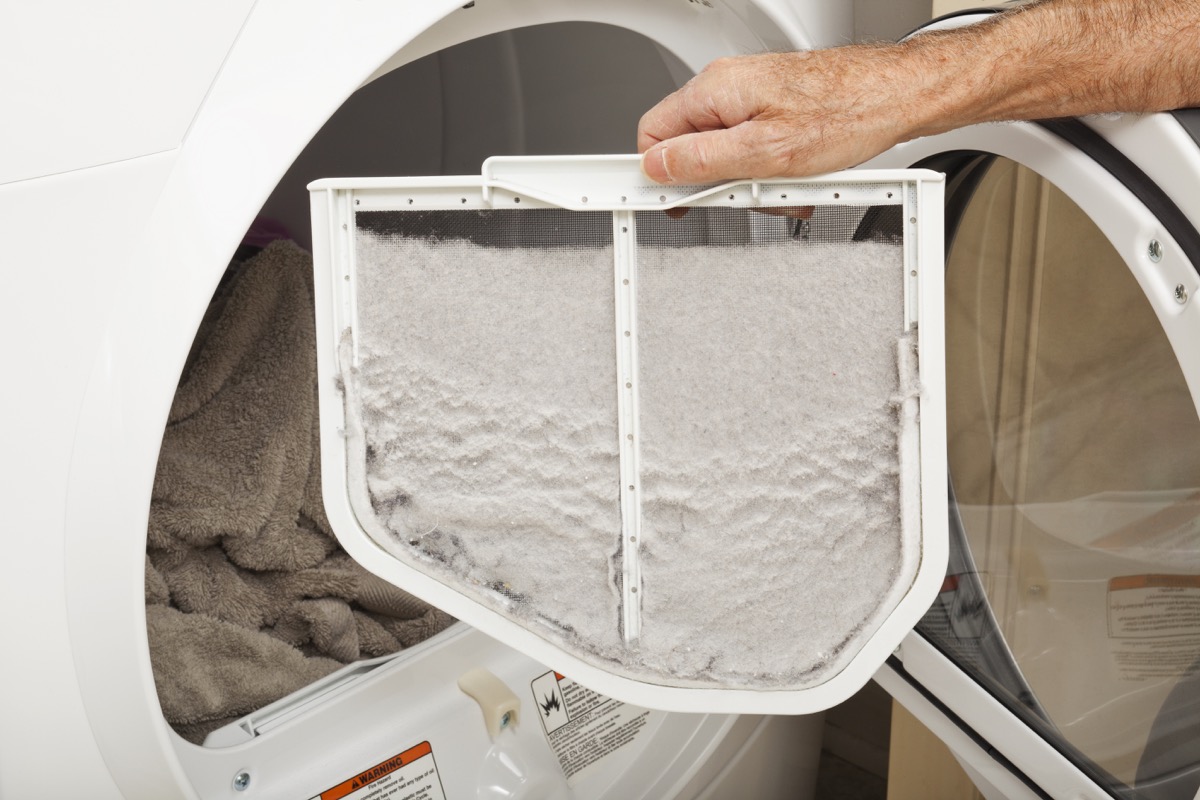
While some laundry mistakes will leave you with less-than-spotless clothes, this one could lead to a major safety issue.
“Not cleaning this filter can contribute to lint flowing through your dryer and getting clogged in the dryer vent,” eventually causing a fire, cautions Paul Berry, franchise owner of Mr. Appliance in San Antonio, Texas. He recommends having your dryer vents cleaned professionally at least once a year.
9
You fill your washer to the brim.
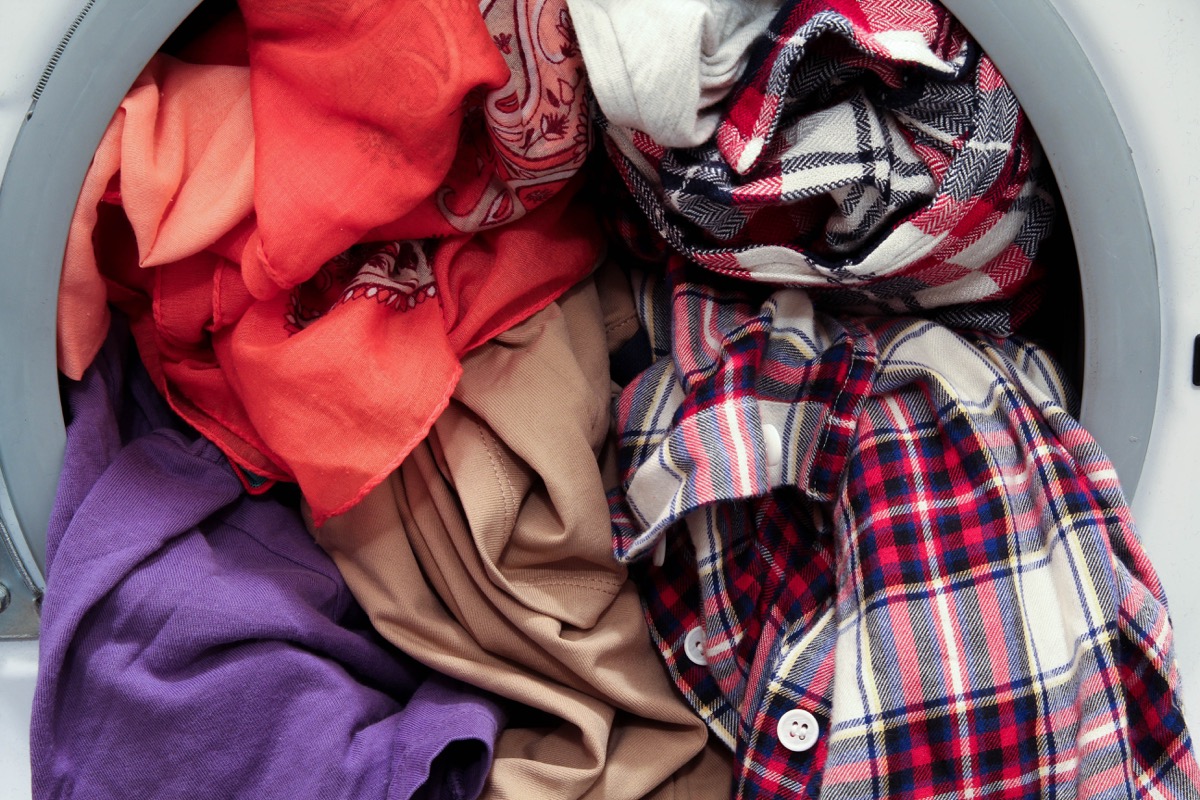
Waiting for bigger loads means you can put off laundry day longer, but overstuffing the machine could work against you in the long run. When dirty clothes are jam-packed against each other, they can come out wrinkly and unclean, says Lily Cameron, cleaning professional and supervisor at Fantastic Services.
If you want your clothes to get thoroughly clean, “you should lighten your load because that helps the clothes move around freely,” she says. Adding too many clothes to your wash and dry cycles also puts undue wear and tear on your appliances, which can shorten their lifespan, she adds.
For more home and cleaning advice delivered straight to your inbox, sign up for our daily newsletter.
10
You let your clean clothes sit in the washer.
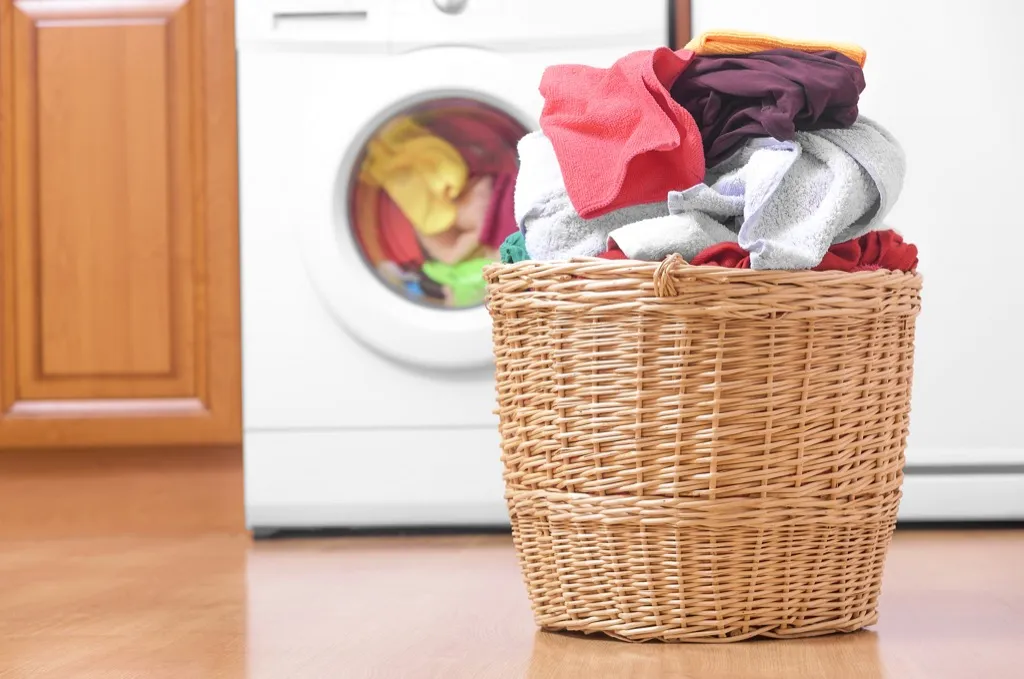
Want to wait until your TV show is over to unload your washing machine? It’s tempting, but clean clothes won’t stay clean if you let them sit.
“If your clothes are sitting wet in the washer, bacteria and mold are thriving in them,” Cameron says. Unless you want to walk around in “clean” clothes that smell like mildew, you’d better get them into the dryer or onto the drying rack pronto.
If you have accidentally left your wet clothes in the washer, Cameron recommends putting them through a hot rinse cycle and drying them immediately afterward.
11
You add fabric softener at the beginning of the wash.
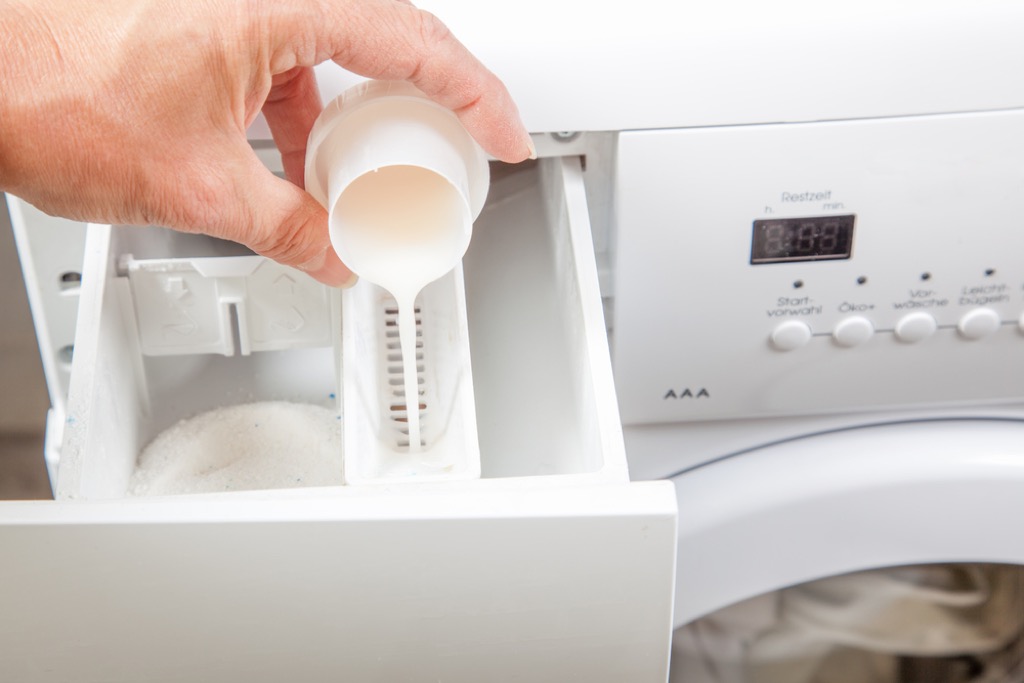
If your washing machine has a specific fabric softener dispenser, feel free to pour the softener in before you start the laundry. But if it doesn’t, adding it at the beginning with the laundry detergent will make the softener useless. That’s because it will wash away with the rest of the dirty water.
“A washing machine has two rinse cycles, and softener should be added in the second one,” explains Alberto Navarrete, general manager of Emily’s Maids in Dallas, Texas.
12
You use too much detergent.
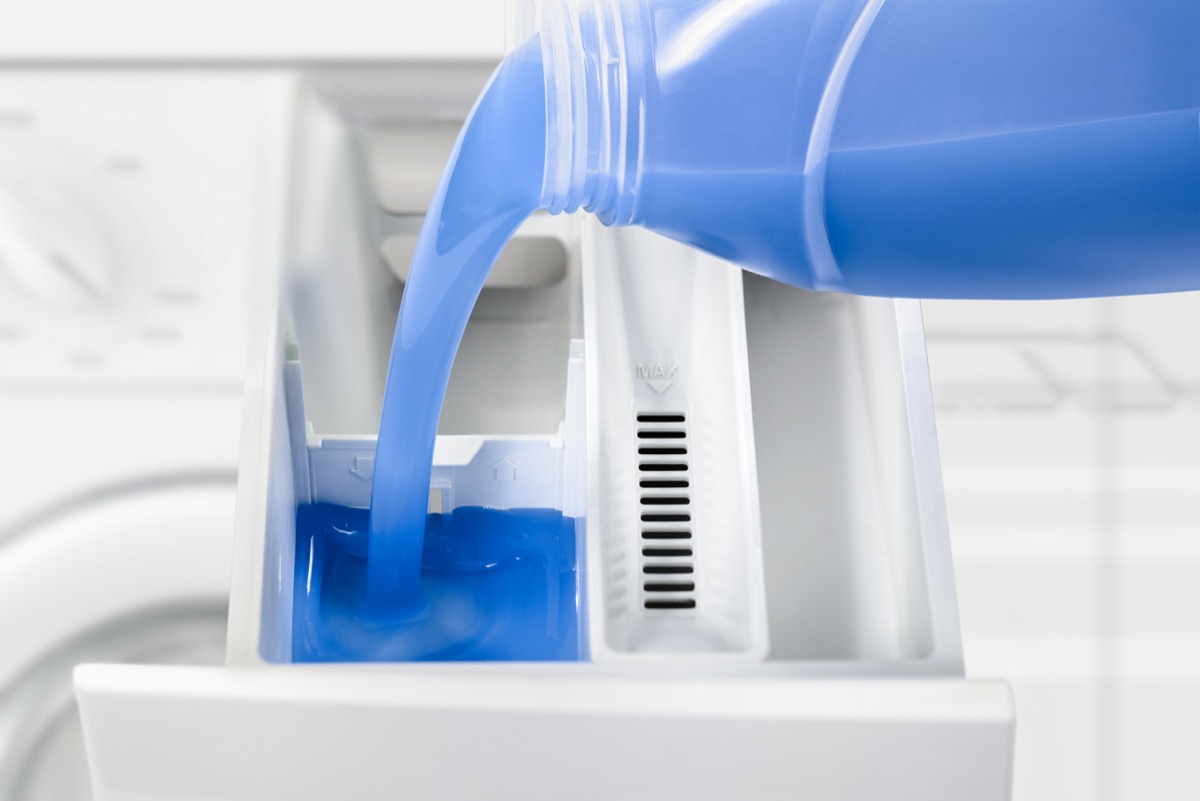
You can have too much of a good thing, especially when it comes to your detergent. “Adding too much detergent can lead to residue on fabrics, excessive soap in the washer, mold, and possibly even damage to your machine,” says Drew Westervelt, founder of Hex Performance.
13
You wash memory foam items.
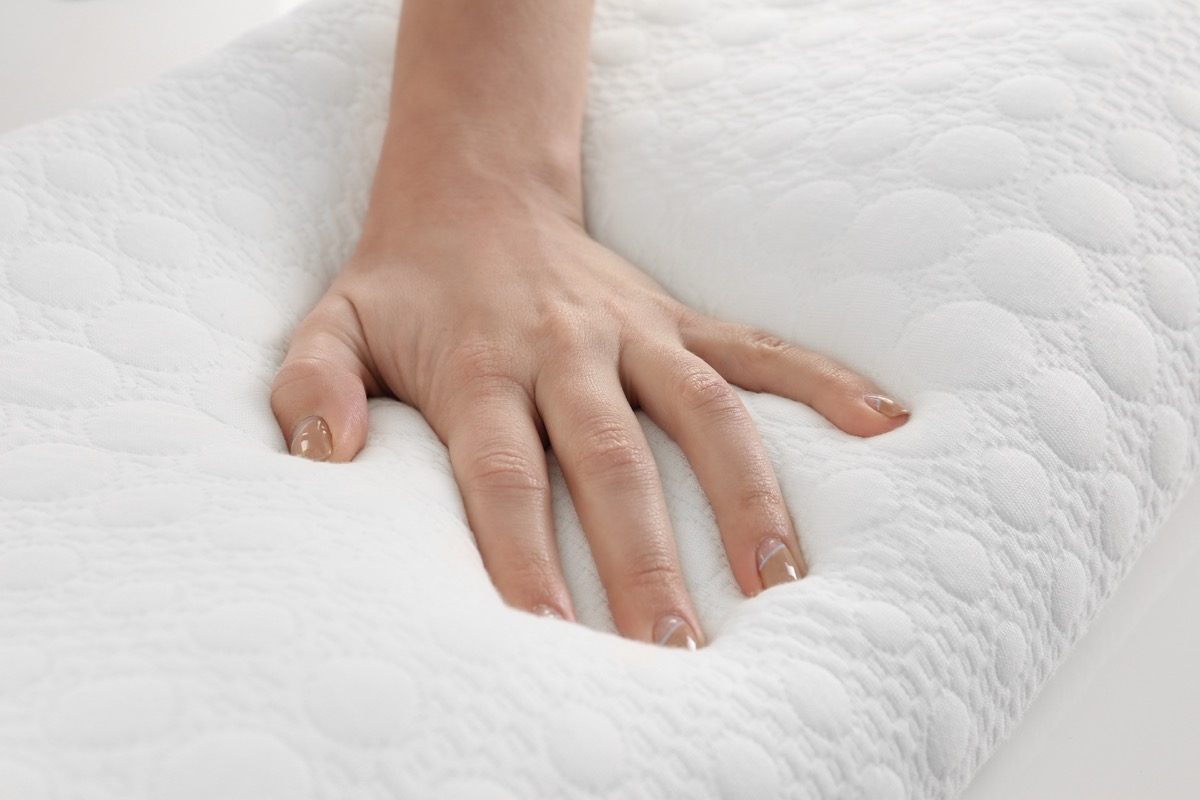
While you should wash most traditional fill pillows from time to time, you’re better off spot-cleaning your memory foam ones.
“The washing machine can cause memory foam to weaken, or even break into pieces,” explains Ron Shimek, president of Mr. Appliance.
READ THIS NEXT: You Can Use an Ice Cube Tray to Get Your Toilet Sparkling Clean, Experts Say.
14
You wash bathroom mats.

The beauty of a bathroom mat is that it effectively absorbs water. Therefore, when you throw it in the washing machine, it’ll take on water and can become too heavy.
“Modern washers have a much faster spin rate than washers of the past—up to 1,200 revolutions per minute during high-speed spins! These faster rates create large amounts of force with heavy items, and the increased weight tears the washer apart,” explained Scott Flint, an expert appliance repair technician with 30 years of experience, to Family Handyman.
15
You wash embellished items.
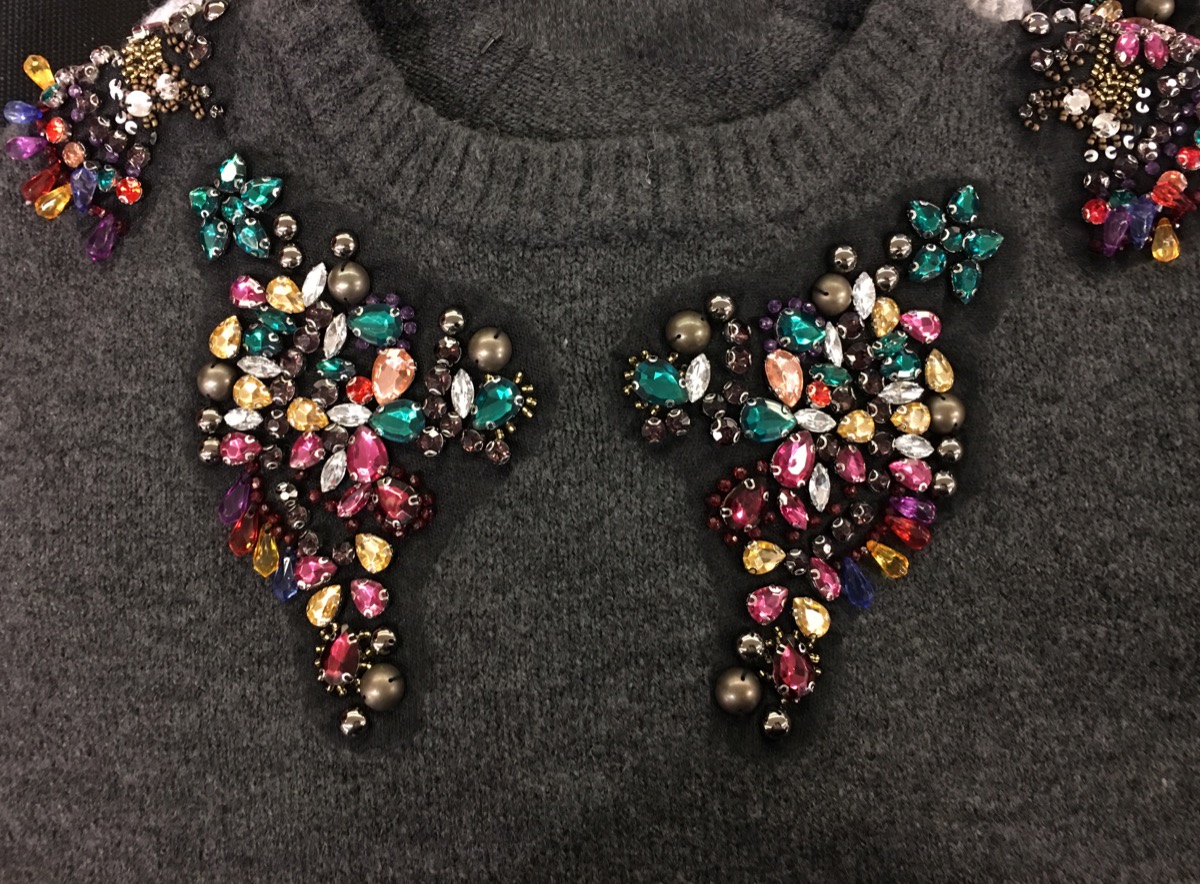
If you want to keep those sequined or rhinestone-adorned items—and your dryer—in tip-top shape, make sure you keep them out of your traditional laundry load.
Any form of plastic or metal embellishment “can get too hot and break off or damage your dryer” when it becomes dislodged, Shimek explains.
16
You use fabric softener on workout clothes.
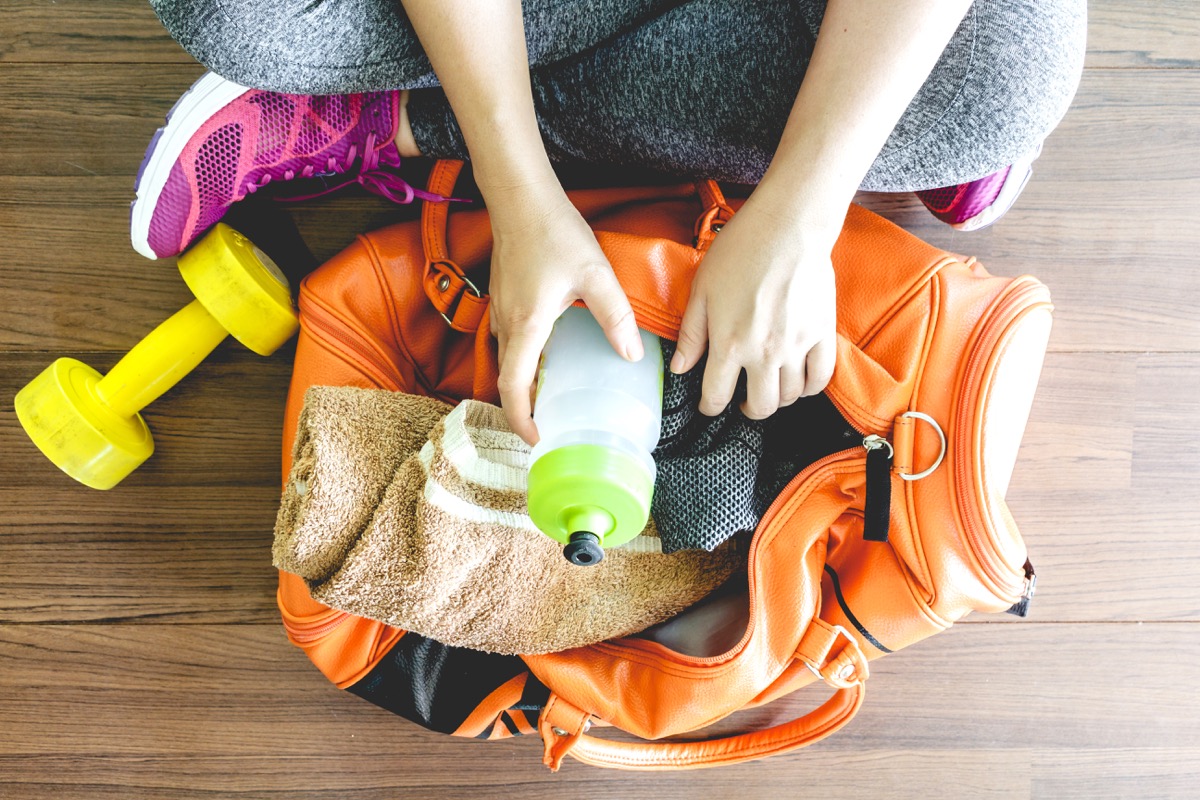
If you want those moisture-wicking clothes to be effective, you’re better off skipping the fabric softener. “Fabric softeners leave a wax-like film on the fibers,” which can block the tiny holes in moisture-wicking clothing that makes it effective, Westervelt explains.
When this happens, instead of the moisture moving away from your body, it stays against you, making you (and your clothes) feel grosser and smell worse. The same applies to using dryer sheets.
17
You use fabric softener on flame-resistant clothing.

Another type of clothing you should never use fabric softener with is anything flame-resistant, which mostly comes into play with infant sleepwear and items made for those working in high-risk industries.
“The chemicals in the fabric softener can break down the flame-resistant chemicals in the clothing, leaving the wearer vulnerable to burns,” Phi Dang, director of home services company Sidepost, previously told Best Life. Again, avoid dryer sheets, too.
READ THIS NEXT: 5 Surprising Household Uses for Aspirin, According to Experts.
18
You keep your shirts buttoned.
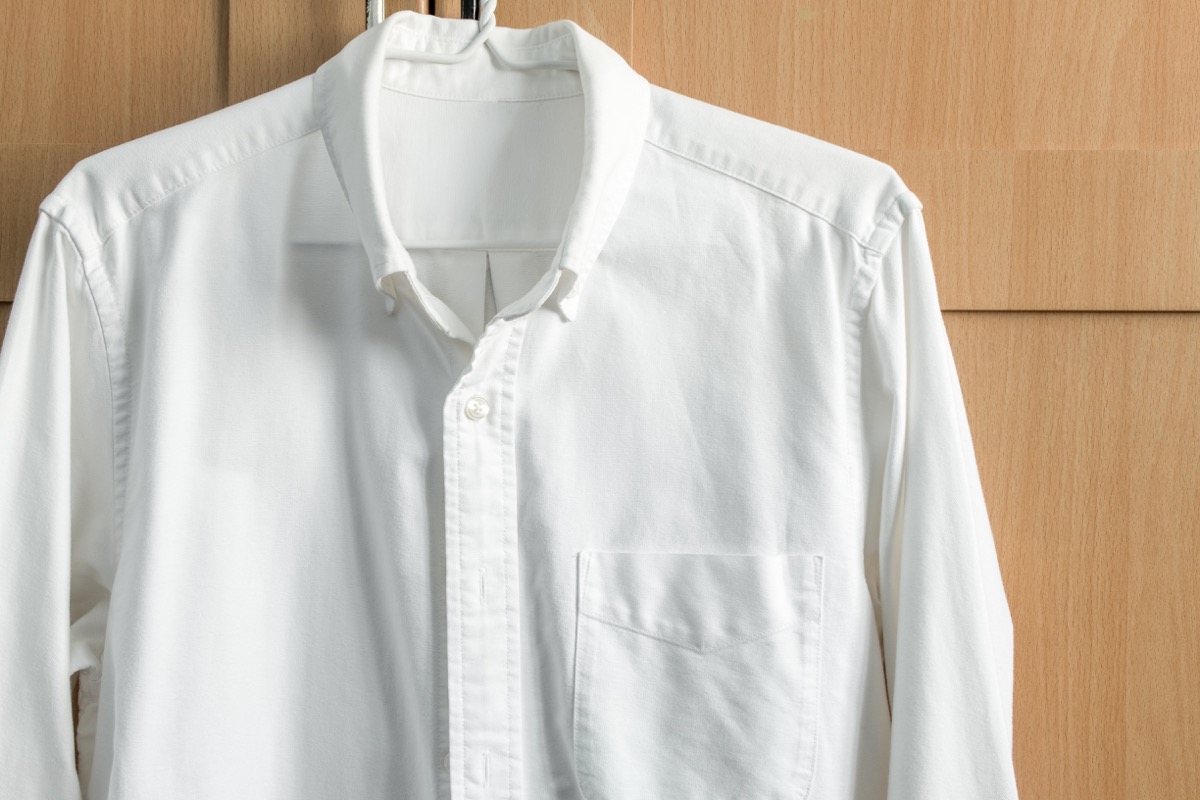
If you want those button-downs to look pristine for years to come, make sure to unbutton them before you toss them into the washing machine.
“The force produced by the machines can be put directly in the buttons, putting stress on the stitching,” Navarrete says. However, if you keep that shirt open, those holes are safe from stretching.
19
You leave zippers undone.
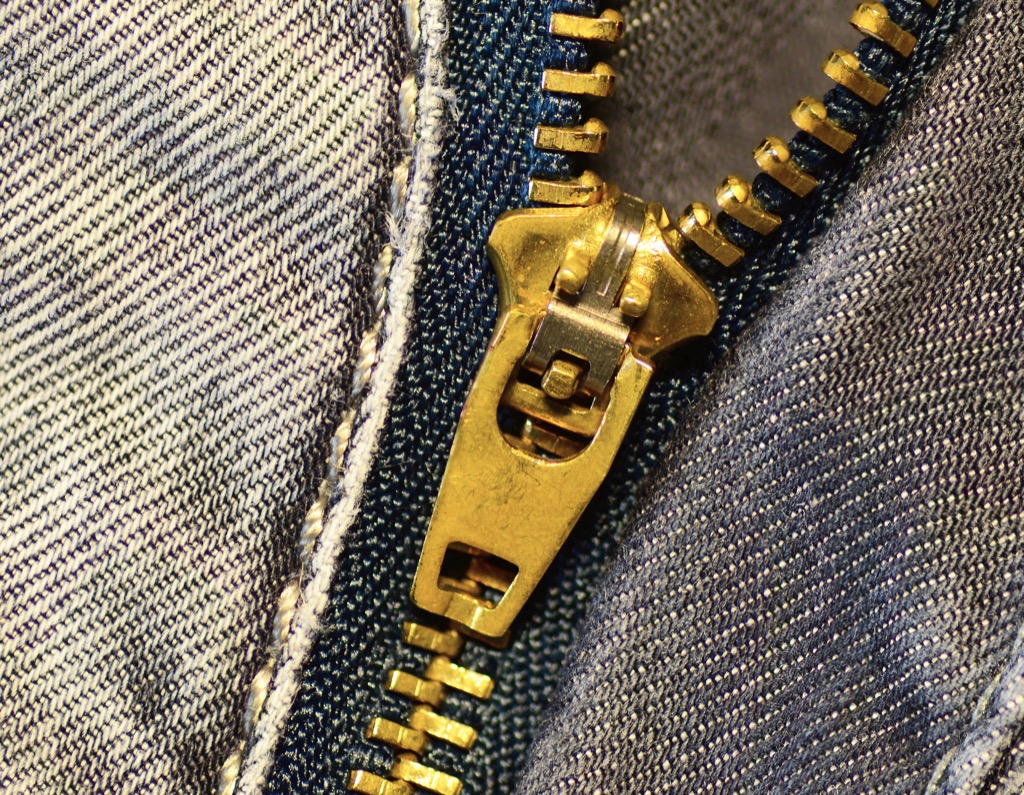
Leave button-downs open, but do the opposite with zippered clothing—or you could risk serious damage to your machine.
“Zippers get caught in the drums and cause problems,” Cameron explains. “If you have a front-loading washing machine, zippers can scratch the glass and may even contribute to the glass panel exploding.”
20
You put sweaty clothes straight in the hamper.
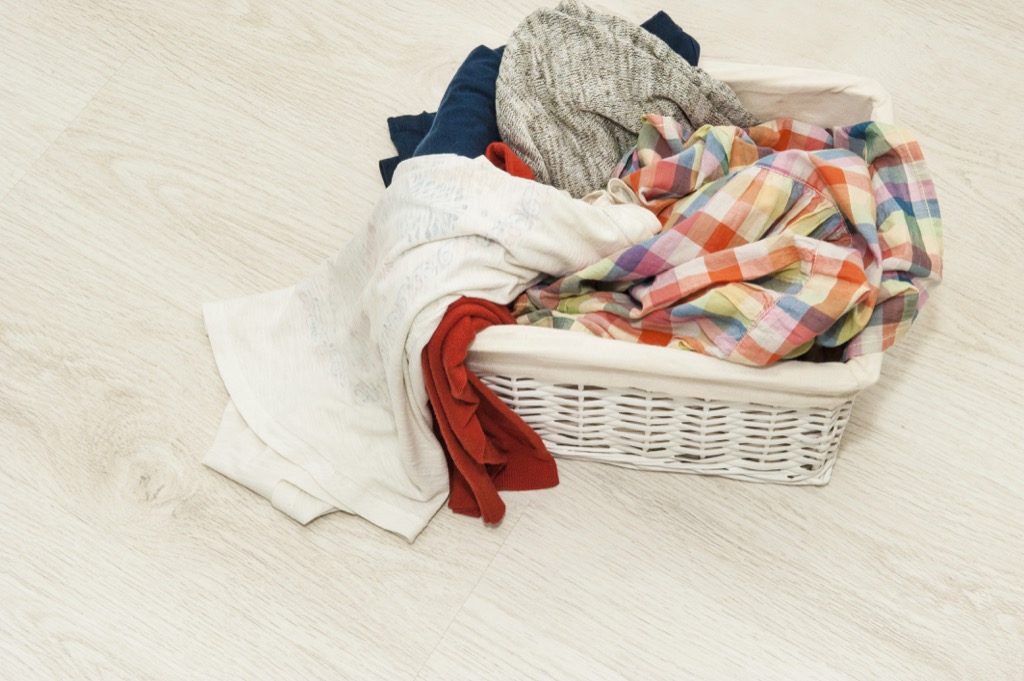
Ever dig out a gym bag only to realize your sweaty workout clothes have been sitting there for days, getting even smellier? That same thing will happen in your hamper if you pile in clothes that are still sweaty or damp. What’s more, it’ll cause the other items in the basket to pick up the odor and bacteria. That’s why Johnson advises always letting gym clothes and towels air dry before throwing them in the hamper.
21
You don’t check your pockets.
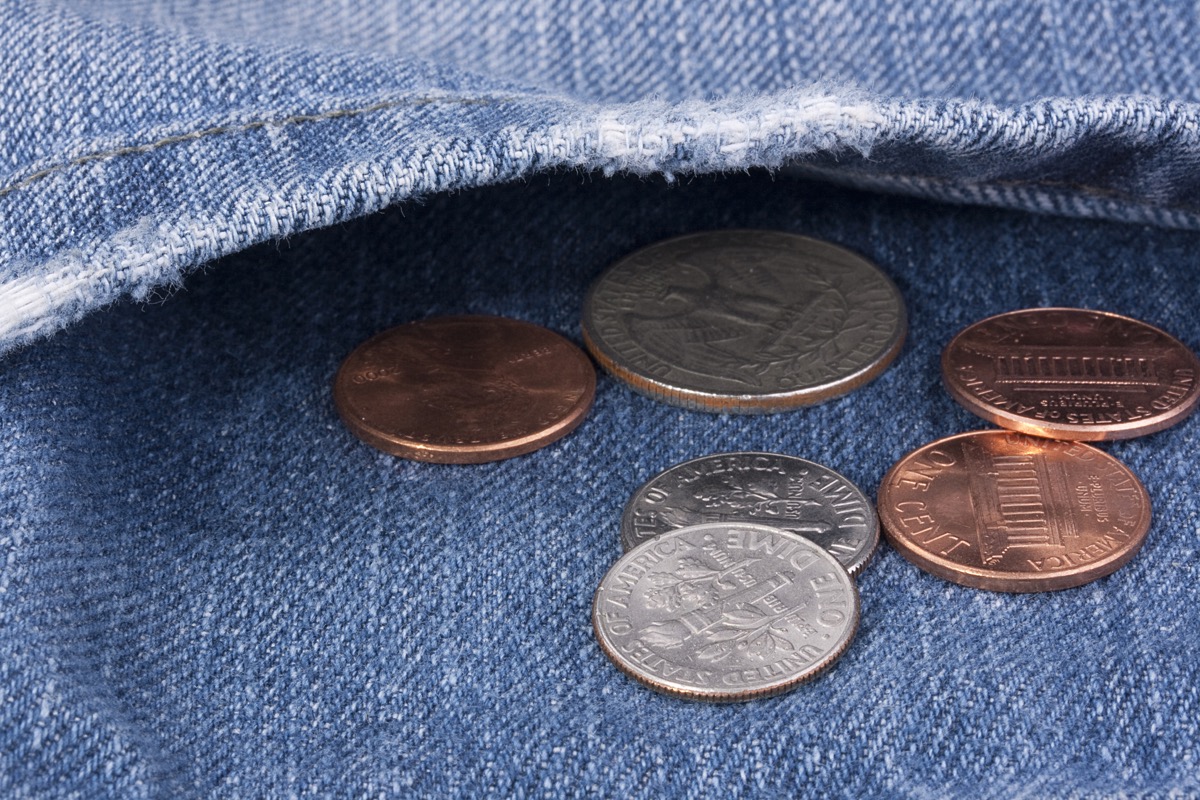
You’ll need to give those pockets more than just a cursory check if you want to protect your clothes—and your washing machine.
While coins can dent the interior of your washer or block a drainage hose, even items you assume would break down in the water can cause some serious annoyance, according to Norma Capin, operations manager at Dallas Maids. For instance, “when we leave tissues and we are washing darks, they come out covered in white fuzz.”